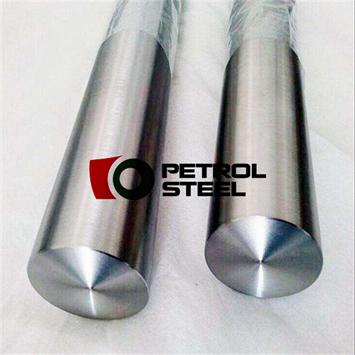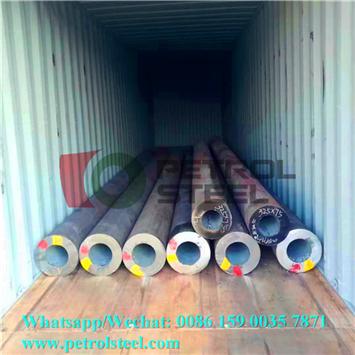What is Nominal Pipe Size
Nominal pipe sizeWhat is the nominal pipe size?
Nominal pipe size (NPS) is the standard size for a set of high pressure or low pressure and high temperature pipes in North America. NPs names are based on an earlier "iron pipe size" (IPS) system.
The IPS system was established to specify pipe sizes. Dimensions represent the approximate inside diameter of the pipe in inches. IPS 6 "pipe is a pipe with an internal diameter of approximately 6 inches. Users began to call it a 2inch, 4inch, 6inch pipe, and so on. First, the size of each pipe is manufactured to have a thickness, and the outside diameter of the pipe later known as standard (STD) or standard weight (std.wt.) has been standardized.
Because of the industrial need to deal with high-pressure fluid, the tube wall is made thicker, which is called super strong (XS) or super heavy (XH). The pipe with wall thickness requires higher pressure requirements. Therefore, when making pipes, their double solid walls (XXS) or double solid walls (Xxh) are made, while the standard outside diameter remains the same. Note that only the terms XS and XXS are used on this site.
Pipeline schedule
Therefore, only three kinds of wall thickness are used in IPS. In March 1927, the American Standards Institute conducted a survey of the industry and created a system for specifying wall thickness based on a smaller step length between dimensions. The name nominal pipe size replaces the iron pipe size, and the glossary (SCH) is invented to specify the nominal wall thickness of the pipe. By adding the schedule number to the IPS standard, today we know a series of wall thicknesses, namely:
Sch 5, 5S, 10, 10s, 20, 30, 40, 40s, 60, 80, 80s, 100120140160, STD, XS and XXS.
Nominal pipe size (NPS) is a dimensionless mark of pipe size. It represents the standard pipe size when it has a specific size code without the inch symbol. For example, NPs 6 represents a pipe with an outside diameter of 168.3 mm.
NPs is very loosely related to the inside diameter in inches, and the outside diameter of NPs 12 and smaller pipes is greater than the size code. For NPS 14 and later, NPs equals 14 inches.
For a given NPS, the outside diameter remains constant and the wall thickness increases as the plan number increases. The inside diameter will depend on the wall thickness specified by the schedule number.
Abstract:
The pipe size is specified by two dimensionless numbers,
Nominal pipe size (NPS)
Schedule number (SCH)
The relationship between these numbers determines the inside diameter of the pipe.
Stainless steel pipe size shall be determined by ASME b36.19, including outer diameter and schedule wall thickness. Please note that the wall thickness of stainless steel in accordance with ASME b36.19 has an "s" suffix. Dimensions without suffix "s" are applicable to ASME b36.10 and carbon steel pipes.
The international standards organization (ISO) also uses a system with dimensionless markings.
Nominal diameter (DN) is used for the metric system. It represents the standard pipe size when it has a specific size code without the millimeter symbol. For example, DN 80 is the equivalent name of NPs 3. Below the table with the equivalent values for NPs and DN pipe sizes.
Actual external diameter
NPs 1 actual od = 1.5 / 16 in. (33.4 mm)
NPs 2 actual od = 2.3 / 8 in. (60.3 mm)
NPs 3 actual od = 3.1 / 2 in. (88.9 mm)
NPs 4 actual od = 4.1 / 2 in. (114.3 mm)
NPs 12 actual od = 12.3 / 4 in. (323.9 mm)
NPs 14 actual od = 14 in. (355.6 mm)
Actual inside diameter of 1-inch pipe.
NPs 1-sch 40 = 33.4 mm-wt OD. 3,38 mm - 26,64 mm ID
NPs 1-sch 80 = 33.4 mm-wt OD. 4,55 mm - 24,30 mm ID
NPs 1-sch 160 = 33.4 mm-wt OD. 6,35 mm - 20,70 mm ID
Note: for NPS ≥ 4, the relevant DN = 25 times the NPS number.
Example of actual outer diameter and ID card
As defined above, no inside diameter corresponds to a true value of 1 "(25.4 mm).
The inside diameter is determined by the wall thickness (WT).
You need to know the facts!
Schedules 40 and 80 close to STD and XS are the same in many cases.
From NPS 12 and above, the wall thickness between Schedule 40 and STD is different; from NPS 10 and above, the wall thickness between Schedule 40 and XS is different.
Schedules 10, 40 and 80 are in many cases the same as schedules 10s, the 40s, and 80s.
Note, however, that in some cases, the wall thickness from NPS 12-NPS 22 is different. Pipes with Suffix "s" have thinner wall thickness.
ASME b36.19 does not cover all sizes of piping. Therefore, the dimensional requirements of ASME b36.10 apply to stainless steel pipes of sizes and specifications not covered by ASME b36.19.
One of The Kind, Millions of Choices
Superior Quality,
Prompt Delivery,
Favorable Feedback,
All Available in PESCO
Select PESCO, You Will Be Right!
Your inquiry would be highly appreciated. We would like to cooperate with you for long terms.
Headquarter: A-4F, Vantone Center, A6, Chaowai St., Chaoyang Dist., Beijing, China.
Tel/Fax: +86 10 8599 9168
Whatsapp/Wechat: 0086 159 0035 7871
Email: sales@petrolsteel.com, jackywinn@foxmail.com
 English
English Chinese
Chinese









